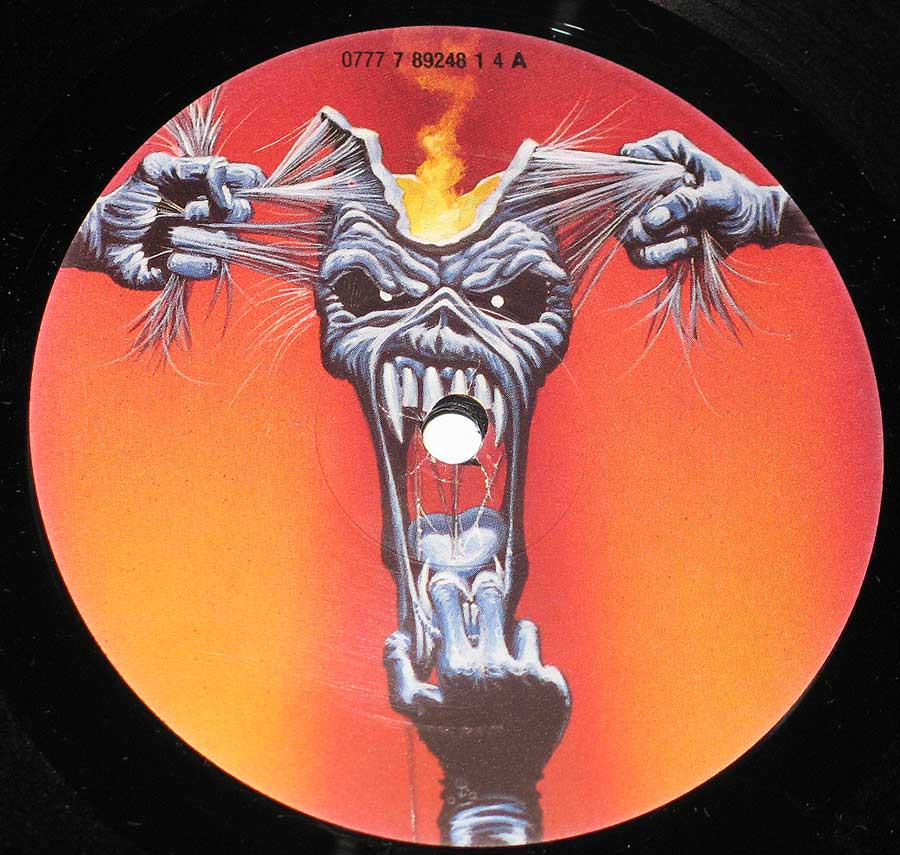Music
Was the Iron Maiden Real? Unraveling the Myths and Misconceptions
The infamous Iron Maiden has long been a focal point in discussions about medieval torture devices, often evoking images of suffering and cruelty. This device is frequently portrayed as a sinister chamber lined with sharp spikes that would slowly ensnare its victims. However, the reality behind the Iron Maiden is steeped in legend, myth, and historical exaggeration. This article aims to delve deeply into the question—was the Iron Maiden real?—to uncover the truths and fables intertwined within this age-old narrative. What emerges from our exploration is not merely a quest for factual accuracy, but also an invitation to contemplate the broader implications of how we conceive punishment, justice, and human behavior.
The Origins of the Iron Maiden Myth

The story of the Iron Maiden begins in the shadows of history, where myths are born out of fear, imagination, and cultural storytelling.
Historical Context

To truly grasp the origins of the Iron Maiden myth, one must first understand the socio-political environment of the Medieval Era. During this time, Europe was rife with wars, plagues, and social upheavals. Torture was employed as a means of punishment and deterrence, but the specifics of these methods often remain obscured. The medieval mindset towards justice was starkly different from contemporary views; the emphasis lay heavily on public spectacles of pain, designed to instill fear among the populace.
In this context, accounts of torture began to circulate, lending credence to the idea that horrific devices like the Iron Maiden must have existed. However, historians argue that the concept of a device specifically named the Iron Maiden does not appear until much later. This leads us to question—where did the initial ideas originate from?
Emergence in the 19th Century
Research indicates that the Iron Maiden most likely emerged in the 19th century and gained traction as a sensationalized invention rather than an authentic tool of medieval torture. The romanticism of the past during this period sparked interest in darker narratives, and scholars began crafting elaborate tales surrounding the lives and tortures of those who lived centuries before them. They turned their attention to introducing frightening imagery—the Iron Maiden became emblematic of a violent past that both horrified and fascinated the Victorian audience.
This act of reimagining history can be likened to modern-day storytelling where horror films or literature take creative liberties to enhance emotional impact. In doing so, they risk distorting the truth and creating legends that may overshadow actual historical practices.
The Role of Folklore
As with many myths, the legend of the Iron Maiden evolved over time, largely fed by folklore and anecdotal evidence. Many accounts began to surface claiming that such a device had been found in various parts of Europe, often presented as artifacts in museums or exhibitions. These stories were compelling; they played into humanity’s fascination with suffering and evil.
However, upon closer examination, it becomes clear that most of these “found” Iron Maidens were likely fabricated or repurposed items misrepresented as ancient torture devices. The blurring of fact and fiction begs the question: how do we define historical truth when layered with folklore and imaginative retellings?
The Role of 19th Century Scholars

The 19th century marked a turning point in how we conceptualize medieval torture through the lens of scholarly interpretation.
Academic Fascination with Torture
During the Victorian Era, there was an intense fascination with the macabre aspects of history. Scholars, writers, and artists began exploring themes of pain, punishment, and cruelty through various mediums, thereby generating an atmosphere ripe for myth-making. The production of books, illustrations, and lecture series focused on torture made the Iron Maiden a prominent figure in the collective psyche.
These works often emphasized graphic descriptions, igniting the imaginations of the readers. It was not just the grotesque aspect that drew people in; it was also the moral quandaries surrounding punishment and justice. As these scholars published their findings, they inadvertently solidified the Iron Maiden’s status as a significant artifact of medieval torture.
Crafting the Narrative
Nineteenth-century scholars actively contributed to crafting the narrative surrounding the Iron Maiden. Their meticulous attention to detail in describing the supposed mechanics of this device painted a vivid image in the minds of the public. Through visual media, they depicted horrifying scenarios wherein victims experienced a slow and agonizing demise inside these contraptions, further escalating public intrigue.
But with this vivid storytelling came the responsibility of discerning between fiction and fact. Unfortunately, many readers absorbed these narratives without questioning their authenticity. This lack of critical analysis allowed myths like the Iron Maiden to thrive, leading the present generation to grapple with misconceptions rooted in exaggerated tales.
Critique and Reevaluation
With the advent of modern historical scholarship, researchers have begun to critique the accounts propagated by their 19th-century counterparts. A more nuanced understanding of medieval justice and punishment reveals that while torture did exist, the specific mechanisms attributed to them, such as the Iron Maiden, are largely unfounded.
By reevaluating these historical claims, contemporary scholars encourage a critical approach toward how narratives evolve, shedding light on the interplay between fact and fiction. The challenge lies in reconciling our fascination with the dramatic past while seeking to uphold the integrity of historical accuracy.
Misconceptions and Legends Surrounding the Iron Maiden

The Iron Maiden occupies a curious place in the collective consciousness, serving as a symbol of both terror and moral reflection.
The Distinction Between Fact and Fiction
Misconceptions abound when it comes to historical torture devices like the Iron Maiden. For many, the very notion of such a device conjures images of barbaric practices in dark, damp dungeons. Yet, upon further investigation, we find a disconnect between what constitutes historical reality and what has been sensationalized over time.
A Reddit discussion highlights the perspective that the Iron Maiden may never have been utilized as a form of torture at all. Instead, it speaks to broader themes of how artifacts from the past have been misappropriated and reinterpreted through the lens of contemporary values and fears. The blending of fact and fiction generates questions regarding the reliability of historical sources and how our collective memory shapes perceptions of the past.
The Role of Anecdotes and Pop Culture
Legends surrounding the Iron Maiden have been perpetuated through anecdotal accounts and pop culture references, further complicating our understanding of its legitimacy. Horror movies, television shows, and literature often invoke the Iron Maiden as a quintessential element of medieval torture, reinforcing the myth and captivating audiences.
Yet, as entertainment mediums continue to portray these dramatized versions of history, the distinction between fiction and fact becomes increasingly blurred. The consumption of these narratives shapes societal perceptions, embedding the Iron Maiden deeper into cultural memory, regardless of its historical authenticity.
Moral Reflections on Punishment
Beyond its dubious historical roots, the Iron Maiden serves as a catalyst for broader conversations regarding morality, punishment, and justice. The fixation on devices designed to inflict pain invites contemplation on the ethics of punishment in both historical and contemporary contexts. If ideals around justice are influenced by exaggerated tales of suffering, what implications do they have for our current legal systems?
The Iron Maiden symbolizes humanity’s capacity for cruelty—a reminder that history is not merely a collection of dates and events but a tapestry woven with themes of suffering, retribution, and moral dilemmas. Engaging with this symbolism allows for introspection on our own beliefs and attitudes toward injustice and punishment.
The Implications of the Iron Maiden’s Fictionality

Exploring the potential fictionality of the Iron Maiden encourages a reconsideration of how we engage with history and its meanings.
Reassessing Historical Narratives
The question of whether the Iron Maiden was real ultimately challenges us to reassess the narratives that underpin our understanding of history. When we recognize the tendency for myths to flourish amid historical narratives, we open ourselves to reconsidering the ways in which we curate knowledge about our past.
Historians emphasize the importance of discerning between evidence-based facts and myths crafted for dramatic effect. By critically engaging with historical narratives, we empower ourselves to seek truth in an age inundated with misinformation. The legacy of the Iron Maiden illustrates the need to question commonly held beliefs and to appreciate the complexities inherent in recounting history.
Broader Societal Implications
The implications of the Iron Maiden myth extend beyond mere historical curiosity; they resonate within our modern understanding of morality, punishment, and justice. If perceptions of medieval torture are shaped by exaggerated tales, what does this reveal about our interpretations of current forms of punishment or societal wrongdoing? The gap between reality and fantasy raises concerns about how narratives can influence our worldview.
In our contemporary society, the sensationalism surrounding topics such as crime and punishment often parallels the way stories of the Iron Maiden have captivated audiences throughout history. By reflecting on how we sensationalize issues of injustice, we allow for a richer understanding of our ethical obligations toward creating fairer systems and upholding human dignity.
An Exploration of Human Nature
Ultimately, whether real or imaginary, the Iron Maiden serves as a powerful symbol of human nature. Its existence in popular imagination prompts inquiries into humanity’s darker tendencies—the capacity for cruelty, the allure of violence, and the moral dilemmas surrounding punishment.
This exploration invites a deeper conversation about how we engage with themes of suffering and retribution. In a world where narratives shape perspectives, we must confront our preconceptions and biases, examining how they inform our approaches to justice and empathy. The Iron Maiden acts as a mirror, reflecting both our fascination with and aversion to the darker corners of the human psyche.
As we unravel the complexities surrounding the question—was the Iron Maiden real?—what becomes evident is that the truth is not merely black and white. The Iron Maiden, while likely a product of myth and imagination, encapsulates essential themes that extend beyond historical curiosities. It prompts us to consider the narratives we tell ourselves about punishment, morality, and justice, challenging us to disentangle fact from fiction in our ongoing engagement with history.
The enduring legacy of the Iron Maiden reminds us that while the device itself may not have existed in the way we imagine, the conversations it inspires are undeniably real. By probing the depths of these narratives, we deepen our understanding of the complexities of human nature and the ethical considerations that arise from our interpretations of the past. Ultimately, the Iron Maiden serves as a cautionary tale, urging us to reflect on the darker aspects of our shared history while fostering a commitment to a more compassionate and just future.
